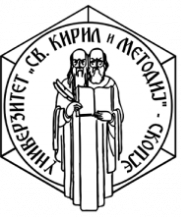Conference Program
The Preliminary Program for IWSSIP 2023 is now available.
Instructions for authors
Presenters will be allocated a maximum of 15 minutes for their presentation plus an additional 3 minutes for Q&A. All presentations are encouraged to be provided in pdf, odp, ppt or pptx format, prepared with Microsoft PowerPoint, LibreOffice Impress, Google Slides, Latex Beamer or equivalent. Presenters are required to bring their presentation on a USB flash drive or provide an online link to the session chair in the meeting room 15 minutes prior to the start of the session.
Keynotes

Jaap van de Beek
Luleå University of Technology
Luleå, Sweden
Meta Surfaces for Cellular Networks: From Idea To Impact
Jaap van de Beek is chaired professor of Signal Processing with Luleå University of Technology, Sweden, and a Fellow of the IEEE. After spending over two decades in industry, in telecommunications research labs with Telia Research, Nokia Networks, and Huawei Technologies, he returned to academia in 2013, where his research continues to focus on radio networks, technologies and solutions. In different roles he has been involved in the various generations of mobile cellular communications systems. He developed base station receiver algorithms for GSM evolution systems. He was among those pioneering OFDM as an access scheme for cellular radio in the late nineties, and he has been contributing to the preparation and specification of 3GPP’s fourth generation LTE standard, for which he holds a number of essential patents. More recently, he has been developing methods that effciently reduce spectral interference of radio transmitters, work for which he received the IEEE Communications Society Heinrich Hertz award. Today, he explores the potential that reconfigurable meta surfaces bring to sensing and communication. Beyond the physical layer of radio access networks, Prof. van de Beek also engages in improving Internet access, wireless network connectivity and cellular radio coverage in rural and remote regions. His research interests extend to technologies, systems, regulatory instruments and business models that help provide ubiquitous coverage and connectivity, for all.
Big Data Analytics for Natural Disaster Management
Natural Disaster Management (NDM, e.g., for wildfires, floods) can be greatly improved by automating precise semantic 3D mapping and disaster evolution prediction to achieve NDM goals in near-real-time. To this end, many heterogeneous extreme data sources must be analyzed and fused: smart drone and in-situ sensors, remote sensing data, topographical data, meteorological data/predictions and geosocial media data (text, image and videos). The lecture focus is on the extreme nature of the data, due to their varying resolution and quality, very large volume and update rate, different spatiotemporal resolutions and acquisition frequencies, real-time needs and multilingualism. Extreme data analytics can help developing an integrated, ground-breaking NDM platform, focusing on real-time semantic extraction from multiple heterogeneous data modalities and sources, on-the-fly construction of a meaningful semantically annotated 3D disaster area map, prediction of disaster evolution and improved communication between service providers and end-users, through automated process triggering and response recommendations. Semantic analysis computations will be distributed across the edge-to-cloud continuum, in a federated manner, to minimize latency. Extreme data analytics will be performed in a trustworthy and transparent way, by greatly advancing state-of-the-art AI and XAI approaches. The constantly updated 3D map and the disaster evolution predictions will form the basis for an advanced, interactive, Extended Reality (XR) interface, where the current situation will be visualized and different response strategies will be dynamically evaluated through simulation by NDM personnel. An innovative, scalable and efficient implementation platform will provide precise NDM support, based on extreme data analytics.
Prof. Ioannis Pitas (IEEE fellow, IEEE Distinguished Lecturer, EURASIP fellow) received the Diploma and PhD degree in Electrical Engineering, both from the Aristotle University of Thessaloniki (AUTH), Greece. Since 1994, he has been a Professor at the Department of Informatics of AUTH and Director of the Artificial Intelligence and Information Analysis (AIIA) lab. He served as a Visiting Professor at several Universities. His current interests are in the areas of computer vision, machine learning, autonomous systems, intelligent digital media, image/video processing, human-centred computing, affective computing, 3D imaging and biomedical imaging. He has published over 920 papers, contributed to 45 books in his areas of interest and edited or (co-)authored another 11 books. He has also been member of the program committee of many scientific conferences and workshops. In the past he served as Associate Editor or co-Editor of 13 international journals and General or Technical Chair of 5 international conferences. He delivered 98 keynote/invited speeches worldwide. He co-organized 33 conferences and participated in technical committees of 291 conferences. He participated in 73+ R&D projects, primarily funded by the European Union and is/was principal investigator in 43 such projects. He is AUTH principal investigator in H2020 R&D projects Aerial Core, AI4Media (one of the 4 H2020 ICT48 AI flagship projects) and Horizon Europe R&D projects AI4Europe, SIMAR. He is chair of the International AI Doctoral Academy (AIDA). He was chair and initiator of the IEEE Autonomous Systems Initiative. Prof. Pitas lead the big European H2020 R&D project MULTIDRONE: He has 34700+ citations to his work and h-index 87+. According to https://research.com/ he is ranked first in Greece and 319 worldwide in the field of Computer Science (2022).

Ioannis Pitas
Aristotle University of Thessaloniki
Thessaloniki, Greece

Zabih Ghassemlooy
Northumbria University
Newcastle upon Tyne, United Kingdom
Optical Wireless Communication At A Glance
This talk will focus on Optical Wireless Communication in relation to next generation wireless networks for a variety of applications, more specifically Internet of Things. The presentation will describe what optical wireless communication is, how it has developed over the past two decades, some of the challenges and issues it faces, and what the future holds for it. In contrast to a one-way presentation, the talk aims to engage the audience and stimulate discussion around the topic as much as possible.
Professor Zabih Ghassemlooy (Fellow, OPTICA; Fellow, IET; Senior Member, IEEE; Member, ACM), CEng, BSc (Hons.), MMU, (1981), MSc (1984) and PhD (1987) Manchester Univ., UK. 1987-88 Post-Doctoral Research Fellow, City Univ., UK. 1988-2004 Sheffield Hallam University and 2004-14 Northumbria University (NU), UK, and is currently Head of Optical Communications Research Group. He is Research Fellow (2016-) and Distinguished Professor (2015-) at Chinese Academy of Science, Vice- Chair of Cost Action-CA19111, 2020-24. He has supervised 74 PhDs, 12 Research Fellows and with over 980 publications. Research interest: optical wireless communications (OWC) and hybrid RF-OWC. Chief Editor: British J. of Applied Science and Technology and Intern. J. of Optics and Applications. Vice-Cahir of OSA Technical Group (Optics in Digital Systems-2018-).
Satellite events
AIoD platform and AIDA presentation and networking event
Organizer: Ioannis Pitas
Location: Main conference hall, Hotel Granit
Date/time: 19:00-20:00, 28th June 2023
Both the AIoD platform and the International AI Doctoral Academy (AIDA) are funded by European Union to empower European research and innovation in Artificial Intelligence (AI).
No prior registration is needed. Attendance will be on a FCFS basis.
- Z. Sotireli, I. Pitas Presentation of the “AI4Europe project, the AIoD platform, networking opportunities” and discussion (15 min)
- I. Pitas, Presentation of the “International AI Doctoral Academy (AIDA) and membership/collaboration opportunities”, Horizon Europe Opportunities and discussion (10 min)
- V. Atanasovski, Presentation of Interreg collaboration opportunities and discussion (10 min)
- B. Gerazov, Presentation of Digital Europe call: “Boosting Digital Skills of young pupils particularly girls” (5 min)
- Self-presentation of AI, ML and related R&D Labs from SE Europe and cooperation proposals. Creation of an AI and IT cluster of SE Europe. (20 min)




